Furious Gapon. Failed leader of the First Russian Revolution
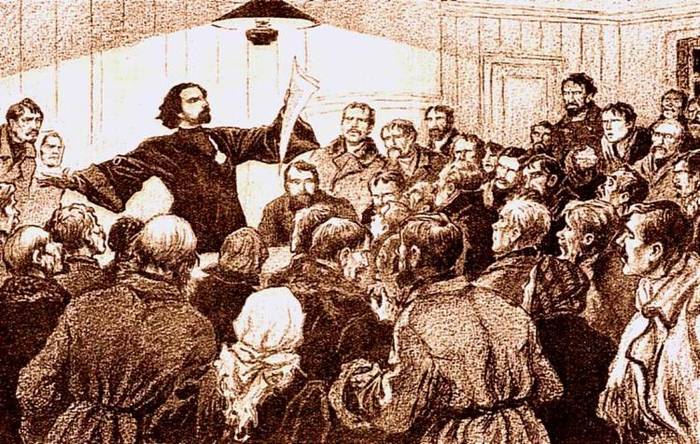
In previous articles, we talked about Yevno Azef, the head of the Social Revolutionary Combat Organization and an agent of the Security Branch, who clearly outplayed his “curators.” He even claimed that only exposure prevented him from organizing the assassination of Emperor Nicholas II. The famous Georgy Apollonovich Gapon was also mentioned in these articles. This priest almost became one of the leaders of the Russian revolution, but was killed at the insistence of Azef and his deputy Savinkov. Currently, the word “Gaponism” is used as a synonym for dirty and bloody provocation. The vast majority of people, when asked “who is Gapon?” They will give the answer: a man who deliberately exposed people who believed him to bullets. The “Short Course of the All-Union Communist Party (Bolsheviks)” stated:
And here is a typical caricature from 1955 from the series “Enemies of the Revolution” (drawing by the Kukryniks, poems by A. Bezymensky):
He sang the royal mercy for bait,
Having raised the banners, he managed to
Enlist as a member of the Tsar’s secret police!”
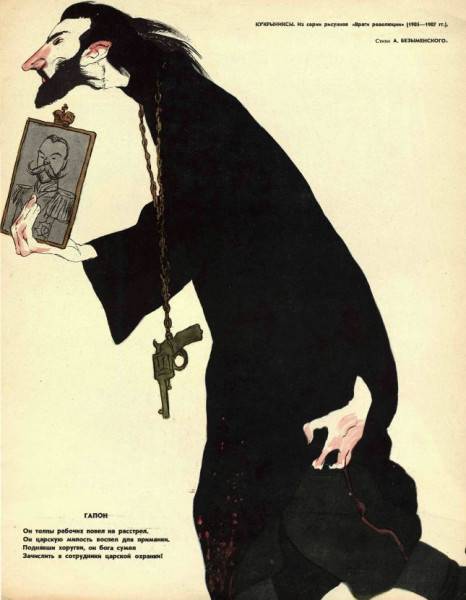
And this is a caricature of expulsion from the USSR Solzhenitsyn, 1974: Gapon sits next to Azef, Cain, Cassius, Brutus and Judas stand:
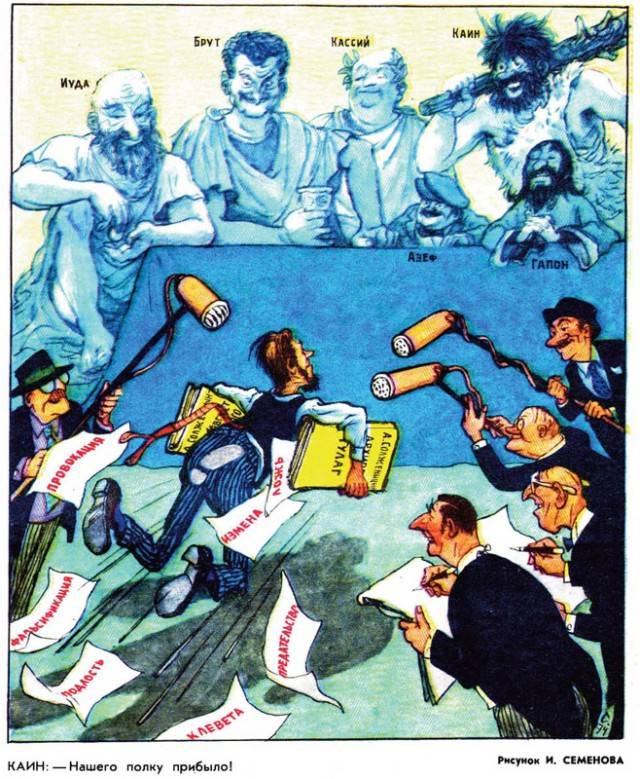
Frankly speaking, the author of the last cartoon flattered Solzhenitsyn very much: this mediocre graphomaniac is too petty and insignificant compared to the other characters in the drawing.
But let's return to Georgy Gapon and his alleged provocation. It is completely unclear how and why the government could benefit from the shooting of unarmed demonstrators who were going to meet the tsar with his own portraits, as well as icons and banners in their hands. After all, it was after January 9, 1905 that the people, who still remembered the tragedy of the coronation celebrations on the Khodynka Field, finally became disillusioned with Nicholas II. From now on and forever this emperor received the contemptuous nickname “Bloody”, and the hypocrites who dared to canonize Nicholas II committed one of the greatest forgeries in the world. stories. It was the events of Bloody Sunday that served as the immediate cause of the First Russian Revolution. It was brutally suppressed, but the flame of popular anger did not go out and flared up again in 1917. After all, no one expected the February Revolution, but it was inevitable in the country, which O. B. Richter, in a conversation with Alexander III, compared to a huge boiling cauldron, in which emerging holes constantly have to be plugged:
On January 9, 1905, Gapon walked in the front row of one of the columns of a peaceful demonstration, was wounded and saved by his future killer Pyotr Rutenberg. The first thing he did then, finding himself in Gorky’s apartment, was to begin writing a proclamation, which contained the following words:
But let’s not forget ahead and begin the story about Gapon in order.
The early life of Georgy Gapon
The hero of today's article was born on February 5 (17), 1870 in Kobelyatsky district of Poltava province. His ancestors were peasants, but his father “made it into the people”, becoming a volost clerk. The family was very religious, and therefore Georgy was sent to study at the Poltava Theological School, and then to the seminary. In his last year at this institution, he became interested in the ideas of Leo Tolstoy, which made a huge impression on him. Georgy Gapon recalled:
He was not the first “rebel” against the hypocrisy of the official Church. The seminarians, as we remember, were Chernyshevsky, Dobrolyubov and Stalin.
As a result, Georgy Gapon was accused of heresy. The authorities threatened to deprive him of his scholarship - and then he himself refused it, and began to earn a living as a tutor. The matter came to the attention of Bishop Illarion of Poltava and Pereyaslavl, who treated Gapon’s “Tolstoyism” condescendingly and allowed him to continue his studies.
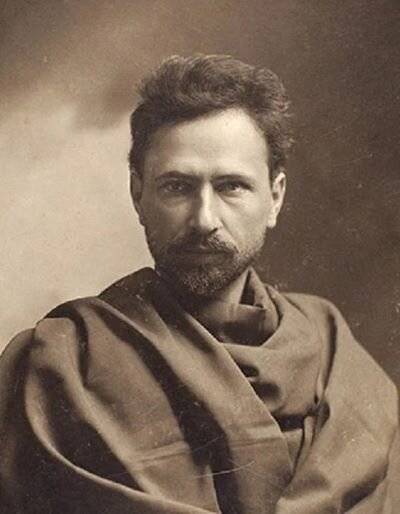
Young Georgy Gapon
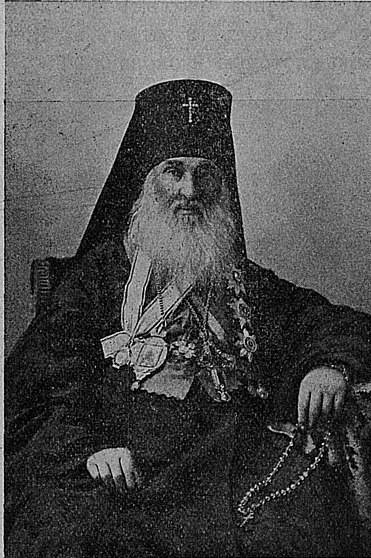
Bishop Hilarion (Yushenov)
In 1893, Gapon left the seminary with a second degree diploma and an unsatisfactory grade for behavior. He seriously thought about giving up the priesthood and even got a job as a zemstvo statistician, but he was convinced to become a priest by his fiancée, a pious girl from a local merchant family. Bishop Hilarion, mentioned above, gave Gapon a fairly rich parish, but after the sudden death of his young wife, he decided to leave for St. Petersburg to study at the Theological Academy. At the same time, with the permission of the Chief Prosecutor of the Synod, V.K. Sabler, he begins to preach in the Sorrowful Church of Galernaya Gavan, among whose parishioners there were many workers from surrounding enterprises. Later Boris Savinkov recalled that Gapon had
Moreover, he hadmagnetic look"and the bright, spectacular appearance of not a flabby official priest, but a fiery "truly popular" preacher, whom his contemporaries compared with Savonarola.
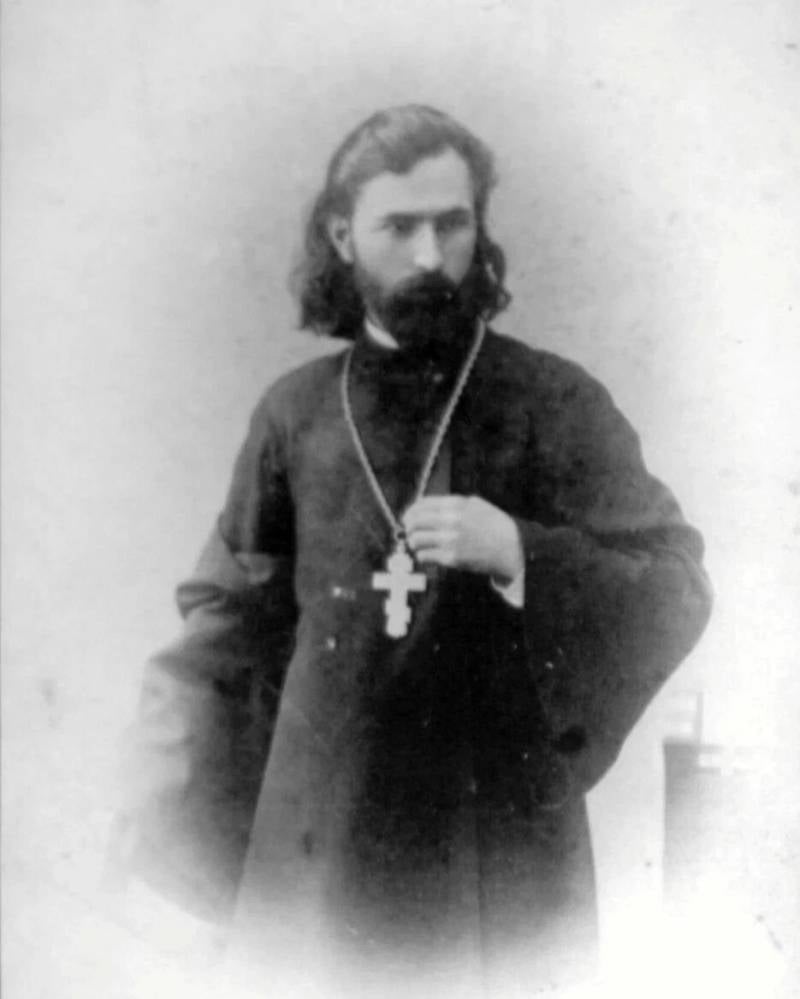
RSDLP member Lev Deitch quotes Gapon himself:
That his speeches and addresses were a great success is beyond doubt.
But the same Savinkov claims:
Gapon also became a priest at the Blue Cross shelter and a teacher of the Law of God at the Olginsky shelter for the poor. And at the beginning of 1904, he received a position as a priest of the Church of St. Prince Michael of Chernigov at the St. Petersburg transit prison (with a good salary of 2000 rubles a year).
Gapon did not hesitate to visit famous hot spots, taverns, and flophouses. Even Empress Alexandra Feodorovna liked his project of rehabilitation “working” houses for “tramps” and tramps. Gapon believed that, “having found the best conditions", these degraded people, "will gain confidence in themselves».
Gapon's ideas clearly echoed the initiatives of John of Kronstadt, who achieved the opening of the House of Diligence. However, they were not like-minded people and allies: Gapon did not believe in the sincerity of John, considered him a hypocrite and a hypocrite, “focused” on external rituals, prayers and religious mysticism.
Start of cooperation with the Security Department
In the summer of 1902, a scandal occurred - Gapon began to cohabit with a minor pupil of the Blue Cross orphanage, Alexandra Uzdaleva, whom he declared to be his common-law wife.
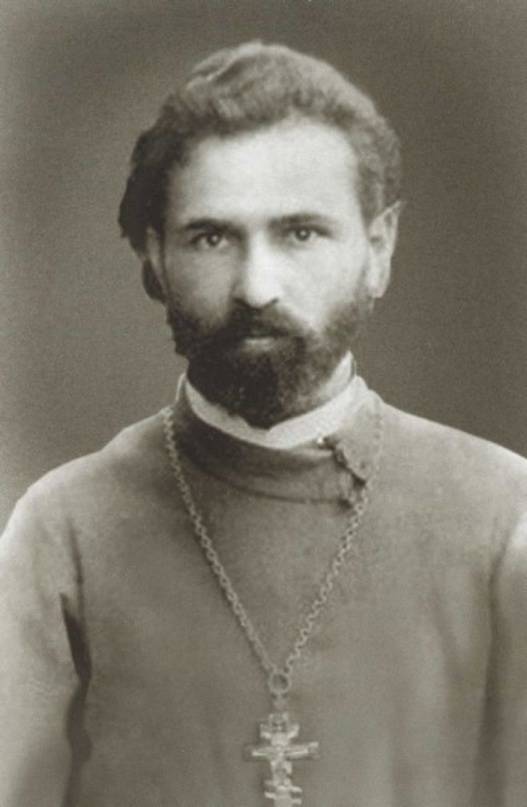
Georgy Gapon in his youth
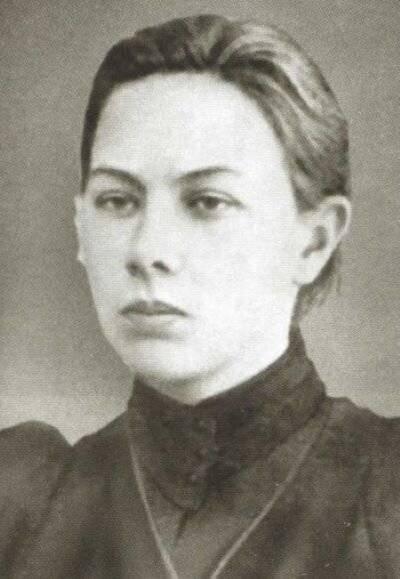
Alexandra Uzdaleva
Gapon was deprived of his teaching position at this orphanage; moreover, he formally no longer had the right to bear the rank of priest. But Metropolitan Anthony (Vadkovsky) of St. Petersburg allowed him to continue serving. It later turned out that it was then that Gapon was offered “help” from the all-powerful Ministry of Internal Affairs - in exchange for “fruitful cooperation" No, Gapon was not offered to become a banal informer or provocateur. It’s just that then the ideas of the head of the Special Department of the Police Department (former head of the Moscow Security Department) S. Zubatov about creating “manual” workers’ organizations controlled by the police became popular. They were supposed to fight for higher wages or better working conditions, but not make any political demands. The new Minister of Internal Affairs V.K. Plehve wanted to create similar organizations in St. Petersburg. The popular preacher Gapon was supposed to become one of the leaders of such a labor movement - legal and loyal to the government. Gapon, who was not an irreconcilable opponent of the tsarist regime, saw in this proposal an opportunity to help both the workers in their confrontation with the factory owners and those simply in need. And therefore he easily agreed to cooperate with the Okhrana.
"Trade Union Leader"
So, in November 1902, on the Vyborg side, the “Mutual Aid Society of Mechanical Workers of St. Petersburg” was created, in whose activities Gapon was recommended to take part. He did not object at all and began to work closely with this organization - already in December of that year. And in August 1903, with funds from the police department, he rented a tea-reading room on Orenburgskaya Street, where workers from St. Petersburg factories began to gather. Soon he proposed to transform the “Mutual Aid Society” into the “Meeting of Russian Factory Workers in St. Petersburg.” This was done in February 1904. At the same time, all employees and agents of S. Zubatov, who resigned in August 1903, were removed from the new organization, and now Gapon became its de facto leader. By the end of 1904, up to 8 thousand people became members of the “Meeting”, who were in 11 branches: Vyborg, Narvsky, Vasileostrovsky, Kolomensky, Rozhdestvensky, Petersburg, Nevsky, Moscow, Gavansky, Kolpinsky and Obvodny Canal.
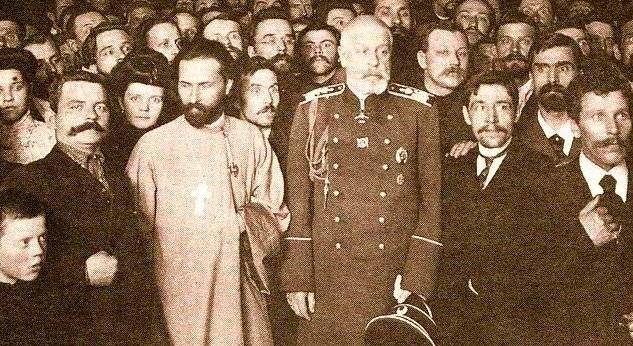
G. A. Gapon and St. Petersburg mayor I. A. Fullon at the opening of the Kolomna department of the “Meeting of Russian Factory Workers.” Autumn 1904
On Gapon’s initiative, libraries were organized, inexpensive shops and “tea houses” were opened, where alcohol was not sold. Thoughts arose about creating workers' savings banks. The leaders of the “Assembly” disputed the fines and dismissals of its members. Questions were raised about the 8-hour working day and the free transfer of land to peasants. However, contrary to Plehve’s plan, a political program was also developed, demands for freedom of speech, press and assembly were made, as well as proposals for the formation of a government responsible not to the tsar, but to elected people’s representatives. At the same time, dissatisfaction with the existing order grew among the liberal intelligentsia and even among the bourgeoisie. These “Frondeurs” held meetings not in cheap teahouses, but in restaurants under the guise of banquets: the so-called “banquet campaign” of 1904. Of course, the liberal bourgeois were very dubious allies of the workers and had no intention of sharing either the power or the profits they received with them. And what prevented them from simply improving working conditions and pay at the enterprises they owned? In the same way, the Decembrist landowners were in no hurry to free the peasants who belonged to them. Both of them wanted to limit the power of the emperor in the interests of their class, and not at all in order to transfer it to the people. However, for a short moment, this strange tactical alliance of the oppressed classes, the liberal intelligentsia and the bourgeoisie suddenly became possible. Nicholas II found himself in virtual isolation, the circle of his supporters was rapidly narrowing, and those who remained had a reputation as “dense” retrogrades or “Black Hundreds”. K. P. Pobedonostsev then openly spoke about the danger
Under these conditions, the workers of St. Petersburg had the idea of submitting a petition to the tsar about the people's needs, asking for protection from the tyranny of capitalists and local officials. This petition contained the following lines:
The number of signatures under this text, according to various estimates, ranged from 40 to 100 thousand. In the book “Stories of My Life” Gapon will later write:
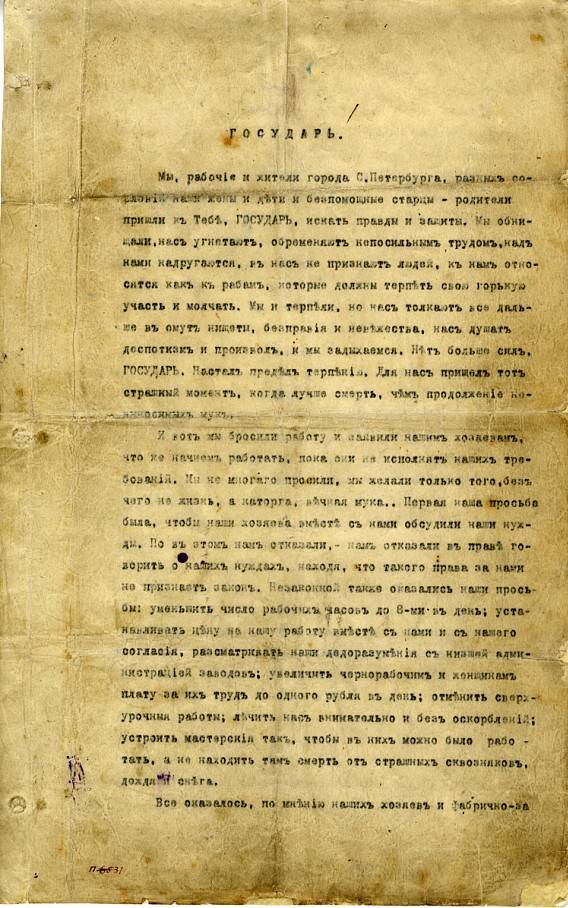
Petition of workers and residents of St. Petersburg
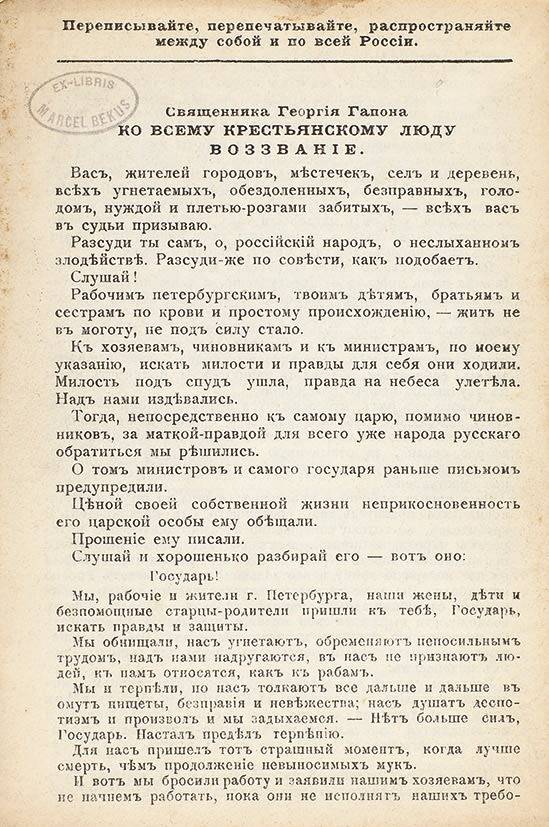
Gapon's appeal to the peasants
French historian Marc Ferro wrote about it this way:
Both the tsar and the government were well aware that the procession would be peaceful and even pro-monarchy. However, Nicholas II and his entourage did not want to make concessions; on the contrary, it was decided to be tough. The demonstrative reprisal against workers and peasants who wanted to turn to the tsar on January 9, 1905 with “bold” demands for social reforms should have been a “lesson” for all those dissatisfied.
Contrary to popular belief, Gapon was not the initiator of the petition, much less the mass march to the royal palace. He did not believe in success and quite rightly feared that the government would use this procession as an excuse to limit the rights of the “Assembly of Russian Factory Workers” or even dissolve it. But other worker leaders were much more radical, and Gapon had to take them into account. And the idea of appealing directly to the king, who supposedly did not know about the situation of ordinary people, was simply in the air. And therefore Gapon had to act on the principle “if you cannot prevent some action, try to lead it.”
The situation became especially tense at the end of 1904 after the illegal dismissal of four workers from the Putilov plant. The administration refused to return them to their jobs, and on January 3, 1905, the Putilovites went on strike. They were supported at all other plants and factories: on January 4, 1905, 15 thousand people went on strike in St. Petersburg, and on January 7 – 105 thousand. The workers of the Imperial Porcelain Factory did not want to go on strike, but Gapon ordered to tell them:
This was enough: the plant joined the strike.
On January 8, Nicholas II writes in his diary:
Against the backdrop of a general strike, the proposed popular march could result in a massacre on the streets of the city. But Gapon hoped that he would be able to prevent violence on both sides. To this end, he tried to give the procession the appearance of a patriarchal family holiday. The workers, at his insistence, went to meet the king with household icons and singing religious hymns, taking their wives and children with them. He announced to the Socialist-Revolutionaries and Social Democrats:
One of the memoirists recalled that Gapon:
And he declared:
Squads were created that were supposed to maintain order and protect the emperor who came out to the crowd.
The government was informed that the march participants would be unarmed, and the organizers would take all measures to ensure order. Gapon probably thought that he had foreseen everything and took measures to prevent any unwanted excesses on both sides. He believed that people with icons and banners in their hands, next to whom their wives and children walk, would behave calmly and adequately. And he hoped that even in the event of some incident, the police, gendarmes, and Cossacks would not act too harshly, seeing in front of them workers with icons in their hands, children and women - after all, they are the same Orthodox Russian people, and not foreign invaders in the land they occupied city.
Gapon was known for his monarchist beliefs, and none other than the head of the palace guard A. Spiridovich said that this workers' leader
Gapon himself convinced the workers:
That is, Nicholas II and his entourage had every reason to trust Gapon and not be afraid of being deceived by him. And even the Minister of Internal Affairs P.D. Svyatopolk-Mirsky informed the Tsar about the inappropriateness of introducing martial law in the capital (which Grand Duke Vladimir Alexandrovich insisted on).
On January 7, Gapon says to Minister of Justice N.V. Muravyov:
On January 8, he addressed a letter to Nicholas II:
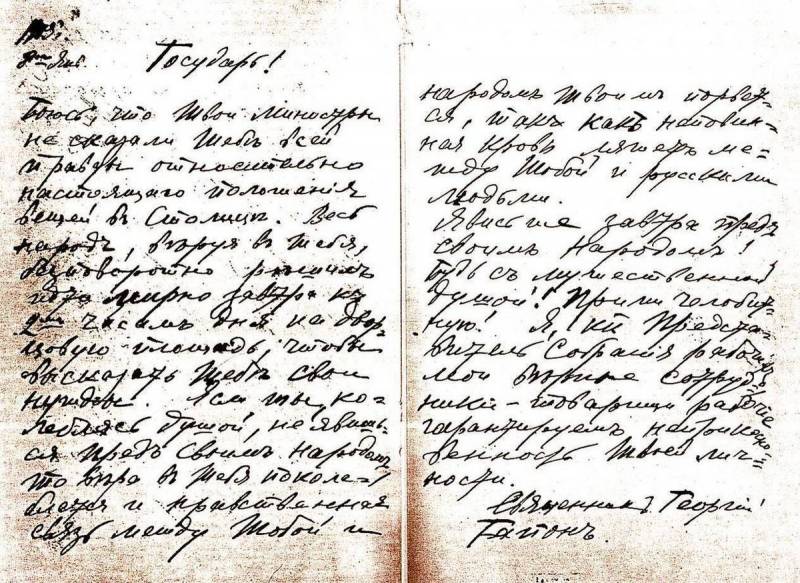
Letter from Gapon to Nicholas II
What was the answer? On the same day, Comrade (Deputy) Minister of Internal Affairs K.N. Rydzevsky signed an arrest warrant for Gapon, but there was no way to arrest the frantic priest surrounded by a crowd.
Gapon said:
It was still assumed that Nicholas II would come out to the people (who would certainly kneel before him), receive elected deputies in the palace (perhaps even treat them to tea) and promise to issue two decrees - on an amnesty for political prisoners and the convening of a Zemsky Sobor. After this, the workers would sing the hymn “God Save the Tsar” in chorus and go home very happy. That is, the procession was supposed to become an act of the greatest unity of the emperor and the people. Nicholas II would have been forgiven for everything that day - even Khodynka. And reasonable (and long overdue) concessions in the social sphere could significantly defuse the situation in the country. However, everything went according to a completely different scenario - bloody and inexplicable. And opponents of Gapon’s plan were on both sides. Persons from the inner circle of Nicholas II, as we remember, wanted to “give a lesson” to the “cattle” who thought too much of themselves and “drive him into a stall.” One of the ardent supporters of the forceful dispersal of the peaceful march of workers was the emperor’s uncle, Grand Duke Vladimir Alexandrovich, commander-in-chief of the guard troops and the St. Petersburg Military District. He claimed that
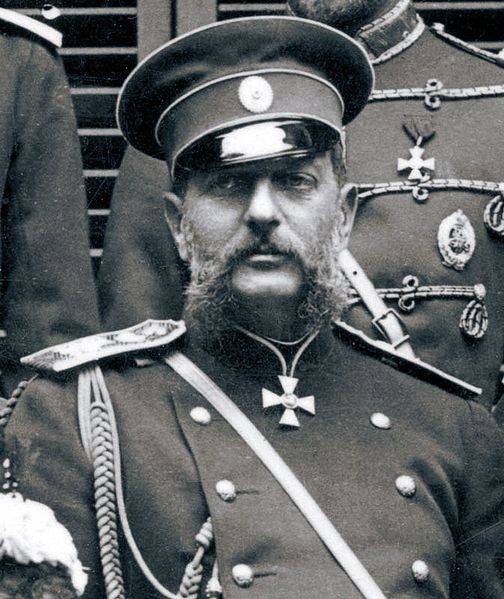
Grand Duke Vladimir Alexandrovich. According to General A. Mosolov, Nicholas II experienced in front of him “feeling of extreme timidity bordering on fear" Photo from 1890
On the other hand, the radical leaders of the workers did not believe in the successful outcome of the procession. A. Karelin, for example, recalled:
But Gapon still hoped for the emperor’s prudence.
By the way, we must understand that Georgy Gapon alone had more influence on the workers of St. Petersburg than all the Socialist Revolutionaries and Social Democrats. Bolshevik D. D. Gimmer recalled:
He also reports that Bolshevik agitators then imitated Gapon to such an extent that they tried to speak with a Little Russian accent.
But the engineer of the Putilov plant - Socialist Revolutionary P. Rutenberg (a native of the Poltava province, that is, a fellow countryman of the hero of the article, party nickname Martyn Ivanovich), in his report to the party leadership, wishful thinking, calls Gapon a “pawn” - and immediately admits that everything will depend on who will be able to use this priest and his influence on the workers for their own purposes.
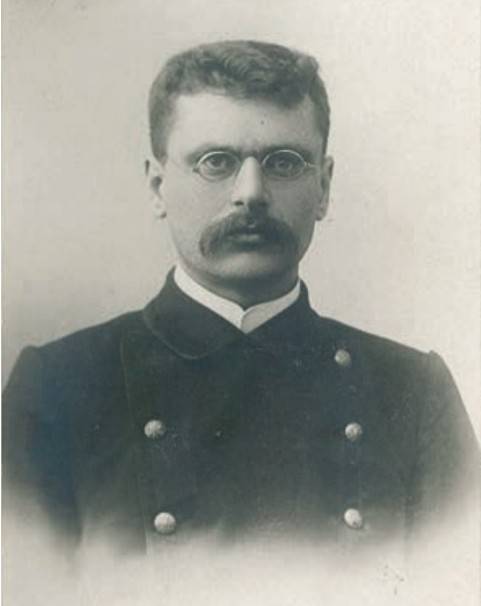
Peter (Pinhas) Moiseevich Rutenberg, photograph from the early 1900s. The man who saved Gapon on January 9, 1905, and then killed him on the orders of the Central Committee of the Socialist Revolutionary Party
The St. Petersburg Bolshevik Committee issued a proclamation on the eve of the march, which contained the call:
But Gapon stated that forceful action should be taken only after the tsar’s refusal to accept the petition:
On January 7, he confirms the seriousness of his intentions:
Already on the eve of the march, other organizers (among whom was the already mentioned Socialist Revolutionary Rutenberg) included in the petition a demand for the convening of popular representation and the separation of Church and state. It was impossible to hope for a positive response from the emperor on these issues. But the radicals were ready to sacrifice civilians, since the brutal reprisal against peaceful participants in the procession was supposed to cause general indignation and bring the revolution closer. N. M. Varnashev, for example, wrote:
Thus, Gapon found himself between radicals and reactionaries, and each of these sides wanted blood. However, if the revolutionaries knew well the real situation in the capital and had reason to hope for a social explosion, then their opponents were in tragic ignorance and in fact “dug their own grave.”
Finally, the crowd factor played a role, when people in the back rows do not know what is happening in the front rows, and any rumor, even an absurd one, can lead to the most unexpected consequences. And it was difficult to control 11 separately marching columns of demonstrators, who at two o’clock in the afternoon were supposed to unite at the Winter Palace in order “with the whole world” to hand over the people’s petition to the Sovereign Emperor.
We will talk about the tragic events that occurred in St. Petersburg on January 9, 1905 and the further fate of Georgy Gapon in the next article.
Information